The Shared Themes of Black Panther and The Last Jedi
 Released two months apart and each grossing more than $600 million at the U.S. domestic box office alone, The Last Jedi and Black Panther have far more in common than their blockbuster status: the two movies also share many of the same core themes in their storytelling. While The Last Jedi has received a range of reactions from the hardcore fanbase and casual Star Wars audience, from enthusiasm to ambivalence to disappointment, the reception for Black Panther has been overwhelmingly positive. Although a number of factors contribute to this divergence in fan response, one important dynamic is the difference in the way the storytelling in the two films delivers upon those common themes. Each time, Black Panther handles the theme more effectively than The Last Jedi.
Released two months apart and each grossing more than $600 million at the U.S. domestic box office alone, The Last Jedi and Black Panther have far more in common than their blockbuster status: the two movies also share many of the same core themes in their storytelling. While The Last Jedi has received a range of reactions from the hardcore fanbase and casual Star Wars audience, from enthusiasm to ambivalence to disappointment, the reception for Black Panther has been overwhelmingly positive. Although a number of factors contribute to this divergence in fan response, one important dynamic is the difference in the way the storytelling in the two films delivers upon those common themes. Each time, Black Panther handles the theme more effectively than The Last Jedi.
Both films involve characters in dynastic storylines. The Last Jedi approaches this theme by subverting it: Luke is a failure as a Jedi Master; Leia’s allies do not arrive to aid her; Kylo Ren despises his heroic parents and reveres his evil grandfather; Rey learns that she has no part in their story. Black Panther builds its tale around the interpersonal drama inherent in families, using the nature of dynastic storytelling to drive the characters and their choices.
One level of conflict is generational. We first see T’Challa decide to bring Agent Ross to Wakanda, despite the risks, because it would not be right to let him die after taking a bullet for Nakia. Then we learn the truth about T’Chaka killing his brother and leaving young Erik to fend for himself in Oakland. Just as Luke’s mistake creates Kylo Ren, T’Chaka is responsible for the rise of Killmonger. The Last Jedi’s portrayal of Luke and his fateful encounter with Ben Solo remains deeply controversial in the fandom, however, because many fans view the moment as either out of character for Luke, or at least as a tragic and disappointing characterization rather than the heroic aspirational Luke they would have preferred to see. By contrast, Black Panther ensures that T’Chaka’s choice is entirely in character, with the former king committed to protecting Wakanda by keeping its secrets, no matter the cost. In that way, the audience recognizes the emotional and personal significance when T’Challa chooses to break with his father’s values – the new king refuses to let one man, much less the whole world, suffer as the price of Wakanda’s isolation and prosperity. Rey, on the other hand, has no similar epiphany of self-discovery from her interactions with Luke: she arrives at Ahch-To hoping to advance the cause of the Resistance in the fight against the First Order, and she leaves to serve the same objective. The only thing that changes is Rey’s perspective on the broken man who once was the legendary Luke Skywalker – not her perspective on herself or her motivations in making decisions on the path to becoming a hero.
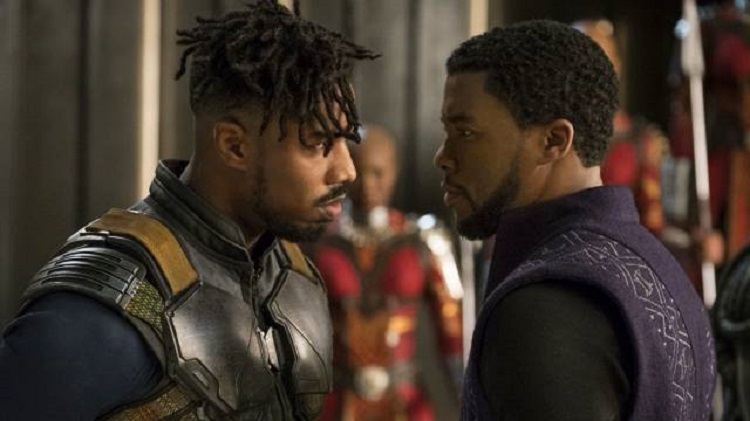 The other level of conflict is between heirs to the dynastic legacy. In Black Panther, T’Challa and N’Jadaka are cousins. Both men have a legitimate claim to seek the throne. When they fight in man-to-man combat for the right to rule – not once, but twice – they represent not merely their own quests for power but also competing visions of Wakanda’s future: the technological paradise safeguarded by T’Chaka and T’Challa, or the engine of global revolution envisioned by N’Jobu and N’Jadaka. The stakes are personal, familial, and national. In The Last Jedi, on the other hand, the dynastic story only encompasses Kylo Ren’s vengeance toward his father, mother, and uncle. Kylo does not seek to supplant Rey as the last Jedi; he seeks to wipe out the Order. When they face one another after the defeat of the Praetorian Guards, only their own personal choices are in play: Rey asks Kylo to return to the good side, and he urges her to join him in the dark. The Force tug-of-war over the Skywalker lightsaber is not a contest between opposing heirs to the family’s legacy, but merely a quick-draw match for a deadly weapon. The stakes aboard the Supremacy fall flat compared to those in Wakanda because, by defining her as Rey Random, The Last Jedi’s conflict is limited to the personal, not anything broader. Black Panther understands what The Last Jedi does not: in the clash between the next-generation hero and villain, the story is more powerful because Killmonger is not Erik Random, but N’Jadaka.
The other level of conflict is between heirs to the dynastic legacy. In Black Panther, T’Challa and N’Jadaka are cousins. Both men have a legitimate claim to seek the throne. When they fight in man-to-man combat for the right to rule – not once, but twice – they represent not merely their own quests for power but also competing visions of Wakanda’s future: the technological paradise safeguarded by T’Chaka and T’Challa, or the engine of global revolution envisioned by N’Jobu and N’Jadaka. The stakes are personal, familial, and national. In The Last Jedi, on the other hand, the dynastic story only encompasses Kylo Ren’s vengeance toward his father, mother, and uncle. Kylo does not seek to supplant Rey as the last Jedi; he seeks to wipe out the Order. When they face one another after the defeat of the Praetorian Guards, only their own personal choices are in play: Rey asks Kylo to return to the good side, and he urges her to join him in the dark. The Force tug-of-war over the Skywalker lightsaber is not a contest between opposing heirs to the family’s legacy, but merely a quick-draw match for a deadly weapon. The stakes aboard the Supremacy fall flat compared to those in Wakanda because, by defining her as Rey Random, The Last Jedi’s conflict is limited to the personal, not anything broader. Black Panther understands what The Last Jedi does not: in the clash between the next-generation hero and villain, the story is more powerful because Killmonger is not Erik Random, but N’Jadaka.
Both The Last Jedi and Black Panther explore the theme of balancing the importance of tradition and history with the necessity of progress into the future. Once again, The Last Jedi addresses this theme by subverting it. Kylo wants to let the past die, if not kill it outright. Nominally the villain’s adversary, Luke shares the same objective: he intends to let the Jedi fade into extinction. Rather than learning collaboratively with a mentor or ally to find a new balance for a new era of Jedi, Rey is left adrift, with no one to guide her to find the wise insights of the old ways alongside the mistakes deserving of correction. By contrast, Black Panther uses the theme to tell an aspirational story about heroism and leadership. In a video featured at Vanity Fair, writer-director Ryan Coogler discusses how the push and pull between tradition and innovation shaped the film’s story. T’Challa interacts with many people who influence his consideration of past and future, including T’Chaka, Zuri, Killmonger, M’Baku, and his sister Shuri, the kingdom’s technological wizard. Nakia, who perhaps knows him best of all, poses the core question of the film: what kind of king are you going to be? Black Panther shows that best path forward comes from the guidance of collective wisdom.
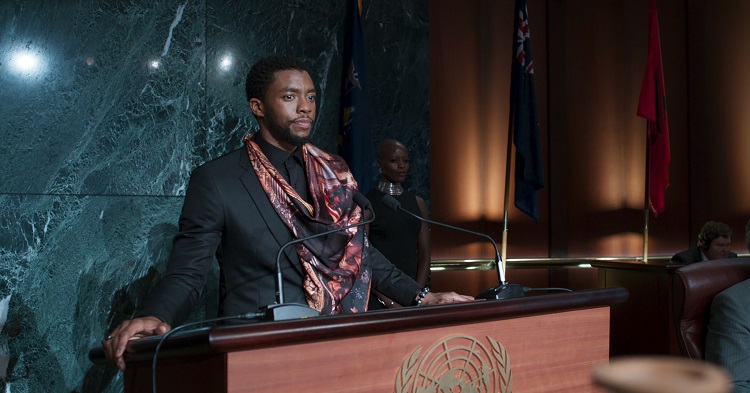 Another common theme of the two films is the difficulty of defining the moral compass of heroism. The Last Jedi does not confront the theme so much as deconstruct it. The nominal “heroes” of the Resistance plotlines partake in disobedience of direct orders, theft, mutiny, and public mayhem. Like the Bendu in Star Wars Rebels, Luke’s self-imposed exile and refusal to oppose evil is based on a false illusion of neutrality that allows darkness to rise unchecked. In the end, Rose reminds Finn that a hero’s motivation must come from love, not hate – but that only answers the question of why to fight, not when or how. Black Panther confronts those latter questions head-on. T’Challa restrains his violence against Klaue in a public venue, gives M’Baku the option to yield when the rules of engagement entitle T’Challa to kill him, and offers Killmonger the possibility of life-saving medical treatment after his defeat. Killmonger’s critique of Wakanda’s complicity in longstanding global oppression, especially of people of color, is astute and powerful – but he does not want justice, only revenge. In Black Panther the heroes use violence when they have to; Killmonger uses it because he wants to. T’Challa concludes that the solution to racist oppression is not to repeat the conquests of the colonizers, but to save the world with love, in the form of humanitarian relief and technological aid that Wakanda has declined to share for too long. Where The Last Jedi undermines the moral integrity of its heroes, Black Panther proudly showcases them as aspirational figures for the audience to respect and admire. Like epic myths and Star Wars at its best, comic book tales find purchase with a broad audience when they are great entertainment and also are moral fables for the modern age.
Another common theme of the two films is the difficulty of defining the moral compass of heroism. The Last Jedi does not confront the theme so much as deconstruct it. The nominal “heroes” of the Resistance plotlines partake in disobedience of direct orders, theft, mutiny, and public mayhem. Like the Bendu in Star Wars Rebels, Luke’s self-imposed exile and refusal to oppose evil is based on a false illusion of neutrality that allows darkness to rise unchecked. In the end, Rose reminds Finn that a hero’s motivation must come from love, not hate – but that only answers the question of why to fight, not when or how. Black Panther confronts those latter questions head-on. T’Challa restrains his violence against Klaue in a public venue, gives M’Baku the option to yield when the rules of engagement entitle T’Challa to kill him, and offers Killmonger the possibility of life-saving medical treatment after his defeat. Killmonger’s critique of Wakanda’s complicity in longstanding global oppression, especially of people of color, is astute and powerful – but he does not want justice, only revenge. In Black Panther the heroes use violence when they have to; Killmonger uses it because he wants to. T’Challa concludes that the solution to racist oppression is not to repeat the conquests of the colonizers, but to save the world with love, in the form of humanitarian relief and technological aid that Wakanda has declined to share for too long. Where The Last Jedi undermines the moral integrity of its heroes, Black Panther proudly showcases them as aspirational figures for the audience to respect and admire. Like epic myths and Star Wars at its best, comic book tales find purchase with a broad audience when they are great entertainment and also are moral fables for the modern age.
Similarly, the two movies offer different perspectives on their primary antagonists. The Last Jedi begins immediately after the events of The Force Awakens, which showed Kylo Ren order the massacre of an innocent village, torture Poe Dameron, abduct and imprison Rey, twice forcibly penetrate Rey’s mind, commit patricide, and nearly murder Finn. The sequel continues Kylo’s progress on the dark path by attacking the Resistance fleet, staging a coup over Snoke, refusing to give the order to cease fire on the undefended Resistance transports, ordering the destruction of the Millennium Falcon with Rey and Chewie aboard, giving the “no quarter” command for the mass murder of the Resistance warriors in the Crait base – and, of course, trying to kill Luke. Yet throughout the film The Last Jedi also continuously attempts to proffer sympathy for him, such as his hesitation to fire missiles at Leia’s bridge, the revelation of Luke’s fateful moment of instinct on the tragic night in the training temple, and using the ForceTime conversations to establish a basis for Rey’s progress in finding compassion toward him that culminates in her willingness to believe – incorrectly – that her example will lead him to return to the good side. A child of privilege turned evil, Kylo conspicuously refuses to answer Rey’s question demanding to know why he killed his father – because, presumably, there is no satisfactory answer.
On the other hand, Black Panther is unafraid to pronounce that its antagonist is wrong. Killmonger’s backstory is legitimately grounded in tragedy: his father killed by his uncle, who left young Erik behind rather than bringing him home to Wakanda. This grievous personal wrong combined with direct experience with the systemic racial injustices in America gives context and explanation to his lifelong pursuit of revenge and revolution. It is easy to understand why Erik decided that the ends justify the means in pursuing his goals. Killmonger is also physically striking and, like other alluring villains, grimly charming. Yet in making Killmonger compelling in these ways, the movie does not ask the audience to empathize with the murders he commits onscreen, including his three heist accomplices as well as innocent victims in London, South Korea, and Wakanda. Upon his defeat by T’Challa, Killmonger recognizes that redemption is not possible for his multitude of crimes: the only prospect is incarceration, and he prefers death to that fate.
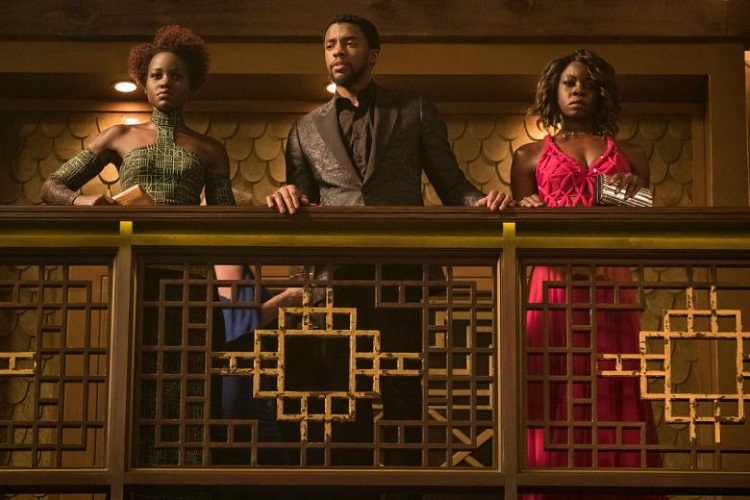 Finally, both The Last Jedi and Black Panther include feminism among the values incorporated into the films’ stories. While The Last Jedi includes a number of prominent female characters, it ultimately fails to deliver on their arcs. Rey’s storyline is not her own, but rather uses her as the lens to explore the conflict between Luke and Kylo. Leia is incapacitated for a significant section of the movie. Rose is a contrasting foil to DJ in shaping Finn’s arc, but has no development or progression of her own. And Holdo serves primarily to subvert fanboy expectations, gender-swapping the traditional grumpy military commander into a woman with pink hair. Black Panther, though, lets its female characters shine. Nakia, Okoye, and Shuri play prominent roles throughout the film. The women complement and strengthen the men – and T’Challa would not have succeeded without them. Shuri is a scientific genius, and her talents pay dividends in resolving plot points. After Killmonger wins the challenge, Okoye and Nakia share perhaps the movie’s most important conversation about the nature of duty, patriotism, and loyalty. But femininity can be deceptive for the unsuspecting; Coogler’s Vanity Fair video also notes that Okoye throwing her wig as a distraction and Nakia using her shoe as a weapon were deliberately constructed moments to showcases their abilities and instincts. Where The Last Jedi is inclusive on the surface, Black Panther is feminist to its core.
Finally, both The Last Jedi and Black Panther include feminism among the values incorporated into the films’ stories. While The Last Jedi includes a number of prominent female characters, it ultimately fails to deliver on their arcs. Rey’s storyline is not her own, but rather uses her as the lens to explore the conflict between Luke and Kylo. Leia is incapacitated for a significant section of the movie. Rose is a contrasting foil to DJ in shaping Finn’s arc, but has no development or progression of her own. And Holdo serves primarily to subvert fanboy expectations, gender-swapping the traditional grumpy military commander into a woman with pink hair. Black Panther, though, lets its female characters shine. Nakia, Okoye, and Shuri play prominent roles throughout the film. The women complement and strengthen the men – and T’Challa would not have succeeded without them. Shuri is a scientific genius, and her talents pay dividends in resolving plot points. After Killmonger wins the challenge, Okoye and Nakia share perhaps the movie’s most important conversation about the nature of duty, patriotism, and loyalty. But femininity can be deceptive for the unsuspecting; Coogler’s Vanity Fair video also notes that Okoye throwing her wig as a distraction and Nakia using her shoe as a weapon were deliberately constructed moments to showcases their abilities and instincts. Where The Last Jedi is inclusive on the surface, Black Panther is feminist to its core.
These contrasts between The Last Jedi and Black Panther have their root in a fundamental difference in how the two movies were created. Rian Johnson is a talented screenwriter and director, but he is also a middle-aged white man and a lifelong Star Wars fan – and in that latter regard, his life experience with Star Wars is fungible with countless other white men of his generation. The most natural way storytellers like Johnson think about how to bring something new to Star Wars is to subvert and deconstruct it, drawing upon how they have always approached the franchise and then deliberately turning those notions on their head. That subversive fanboy take on Star Wars did not lead to favorable response in the fandom during the Legends era of Star Wars storytelling, and many of the same reactions are arising now about The Last Jedi, as well. Ryan Coogler, on the other hand, is also a talented screenwriter and director and is also lifelong fan of the source material for his film – but, as a black man from America, his background and life experience are completely different from anyone who had made a Marvel Cinematic Universe film previously. Coogler did not have to think about how to bring a fresh perspective to the MCU, or find ways to subvert fan expectations for an MCU film – he simply told a story that was true to himself as a storyteller, and that alone gave his film something we had never seen before.
The acclaim for Black Panther and the challenges for The Last Jedi demonstrate that the best way to deliver new storytelling in established franchises is not to count on the same kind of storytellers to do things differently, but rather to hand the reins to diverse voices.

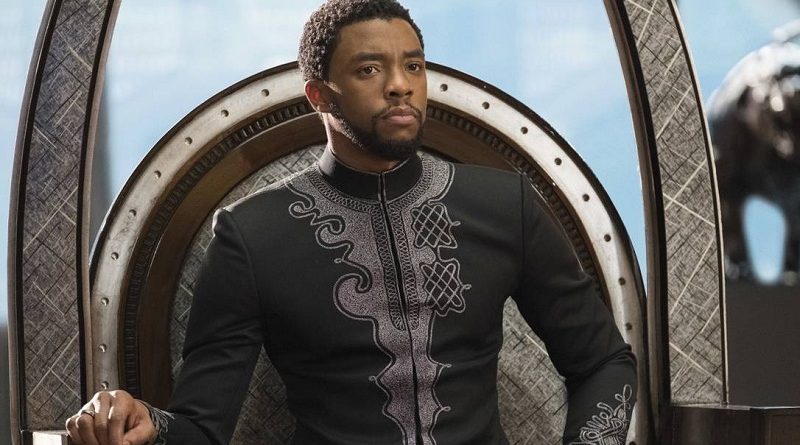







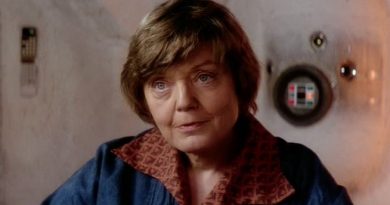
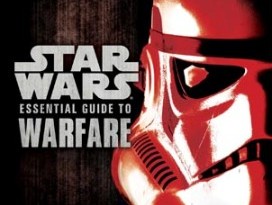
Pingback:Star Wars Themes in the Star Wars Rebels Finale and The Last Jedi – FANgirl Blog